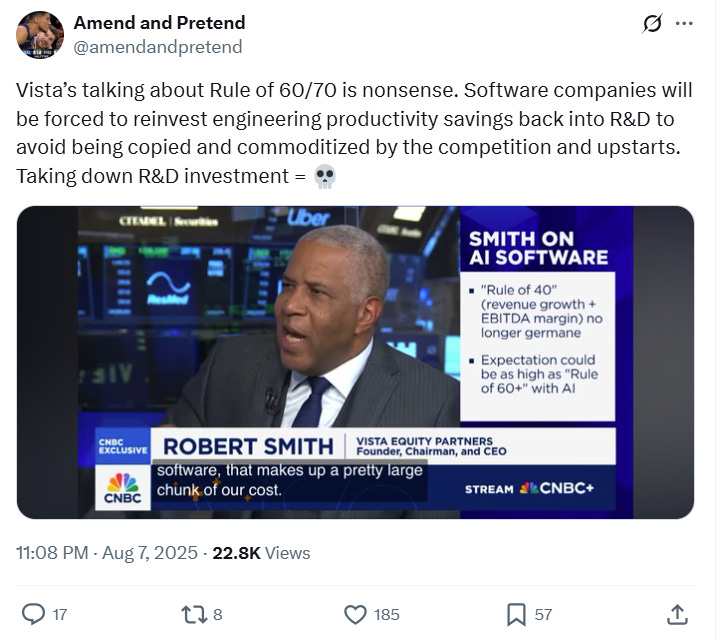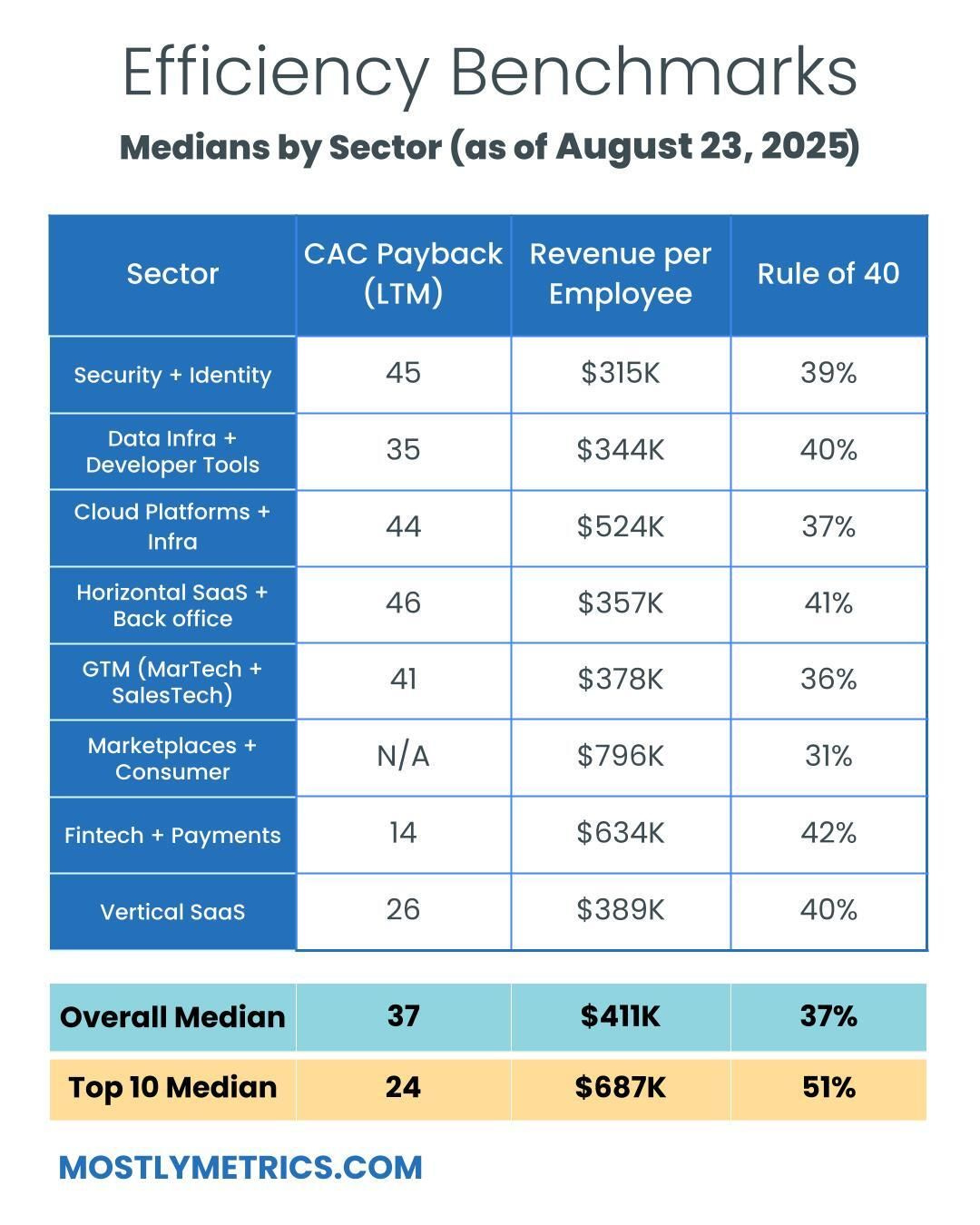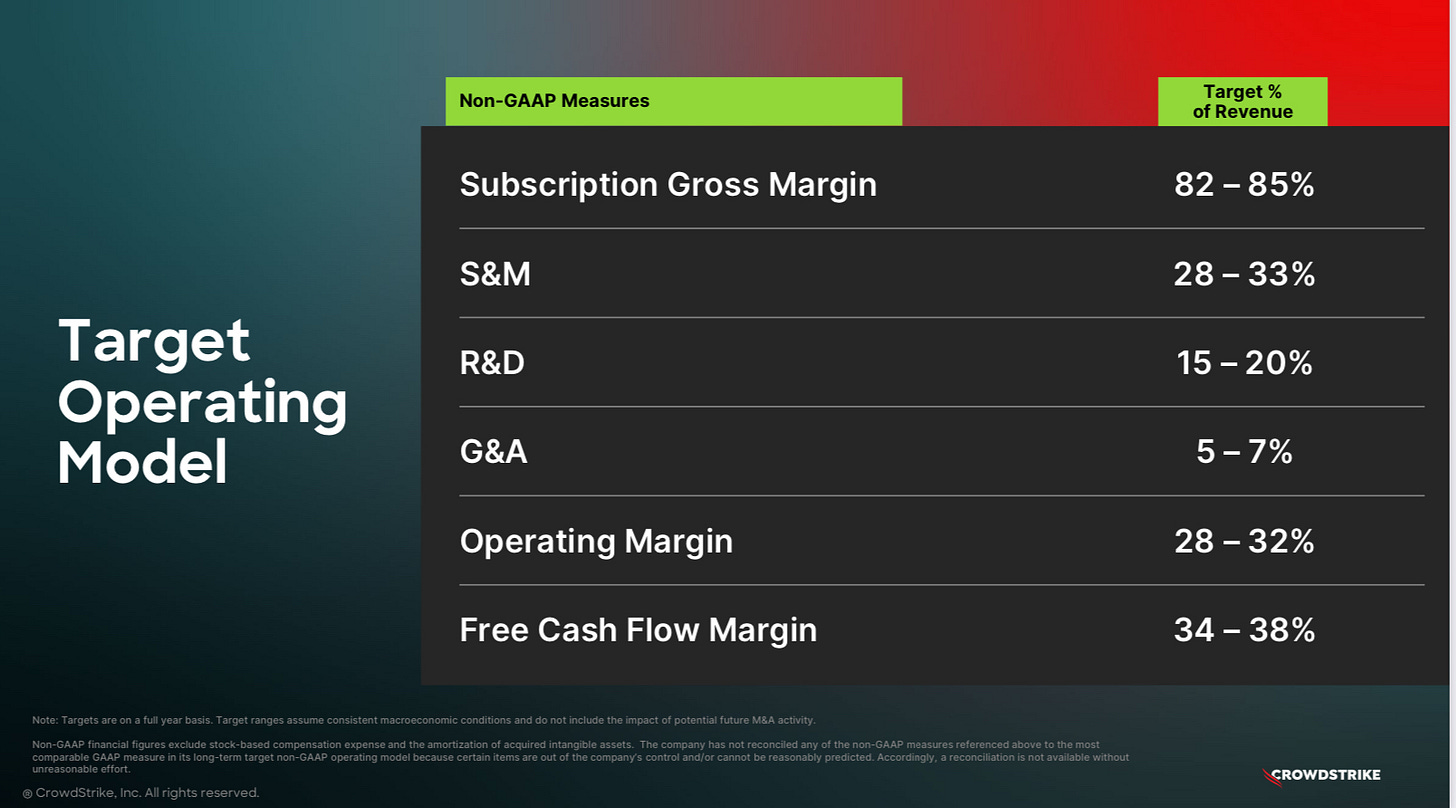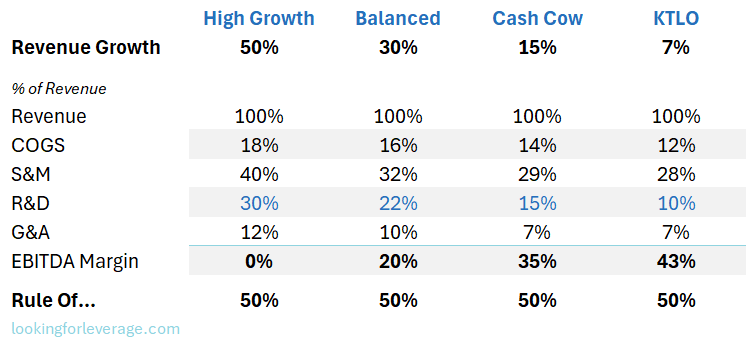Do PE Companies Trade Innovation for Margins?
How you arrive at your "Rule of" says a lot about your business

As a CFO, I’ve faced the familiar chaos: manually updating the Revenue & Customer Cube, leading to costly delays and blind spots in forecasting, strategic decisions, and investor reporting. Every CFO knows how crucial real-time access to this accurate, structured, deeply segmented data foundation is—but consistently maintaining it is another story.
A recent study of 100+ PE-backed finance leaders shows that moving from data chaos to disciplined automation isn’t just achievable—it’s transformative for your enterprise value.
If you’re done chasing spreadsheets and want revenue intelligence you can actually trust, this white paper lays out a clear, actionable framework.
The Eternal Quest for 25% Profit Margins
The goal of business is to make money. That ultimately means generating profits… net income, EBITDA, free cash flows, or as I bluntly like to say
putting some "dope on the table."
Every pitch deck has that slide where companies showcase their cost structure today, tomorrow, and at some hypothetical long-term destination. This is typically called your "target operating model."
We've all seen the familiar breakdown: Gross Margin, S&M, R&D, G&A, and Operating Margin, all as a percentage of revenue.
A tip for all operators: Make sure your target model shows a "+25%" bottom line at scale.
It's the magic number investors are looking for you to print, whether it's credible to claim today or not.
Why 25%?
The 25% operating margin benchmark isn't arbitrary. It signals a lot:
Capital Independence: It demonstrates a sustainable business model that doesn't require outside capital (read: dilution) to control its destiny
Growth Investment Capacity: You can still plow ~30% of revenue into sales and marketing each year to power future growth
Rule of 40 in Reach: At 25% operating margins, you only need to grow 15% per year to achieve the Rule of 40.
And with that said, especially in the age of AI, many think the Rule of 40 is increasingly a weak bar. Robert Smith, founder of Vista Equity, certainly thinks so.

So let's play a hypothetical game here….
You're trying to be a Rule of 50 company (as many PE-backed companies strive for).
That's certainly worthy of a premium valuation. And we know this to be true because the top ten highest valued companies in the public markets on an EV/NTM basis weigh in at a Rule of 51. This compares favorably to the overall median, which sits at just a 37.

The Archetypes
There are really only 6-8 meaningful business archetypes that hit Rule of 50, each with completely different risk profiles:
(Yes, I know that like mathematically there are +500 permutations, but for the sake of narrative, bear with me…)
The following are formatted as Revenue + EBITDA.
Hyper Growth (50% + 0%): Betting everything (and maybe more) on growth
High Growth (40% + 10%): Clear prioritization on expanding sales. Recently break even.
Balanced (30% + 20%): Bolt on acquisitions from CF + debt keep growth up.
Mature Growth (25% + 25%): An even split.
Cash Cow (15% + 35%): Milking the cows, but still feeding them well.
Harvesting (10% + 40%): Extracting massive value
Keeping the Lights On (KTLO) (5% + 45%): Declining growth, and under investing
Death Spiral (0% + 50%): No growth, all profit
Many would argue that revenue points are worth more than profit points, and I tend to agree that they're not created equal (assuming it’s high quality revenue). Your revenue endurance—basically how long you can keep your pace of growth up—is the most meaningful driver in discounted cash flow valuation models.
But here's the key question: If you can no longer count on your revenue to carry +15% or more of the workload, where do the additional points come from?
Remember… we’re trying to get to 50.
Most of the time, from R&D.
Finding Points
If your CAC payback periods are already dialed in to whatever the market can reasonably deliver, your back office functions are a lean machine, and your customer retention is pushed as high as you can get it before hitting diminishing returns across customer support, where do the savings come from?
Well, most scaled software companies think they can run sustainably with R&D down to 10% of revenue.
But running low R&D investment only works in an environment where you have no competition and limited risk of new entrants.
With increased competition due to the declining cost to develop software, your customer base will likely get picked off by competitors.
And how many PE-backed companies do you know that have limited to no competition?
Maybe a few sub scale companies that Constellation Software swooped up back in the day and are still running at enormously rich margins without a big investment in innovation or any competition. But it's definitely not the norm.
So it begs the question, which company would you rather own in 5 years?
The answer depends.
However, don’t stare too long at the "KTLO" company. You better sell it before it melts.
The Innovation Death Spiral
And that's why a lot of buyouts get a bad name. They're dressing up margins to look good in the short term, not to endure well over the long term. It's what you could call the Innovation Death Spiral. If you don't build new stuff, you don't have new stuff for customers, which hurts revenue. It's a classic case of eating the seed corn (a fun term I learned today that makes me feel like a Cowboy when I say it).
PE firms often tout their operational improvements and efficiency gains. But what if these improvements are temporary and come primarily from cutting the "fat" of innovation rather than true operational excellence?
Mortgaging Tomorrow for Today’s Margins
As terrible as that title may be (AI did not write it), it’s what happens.
The companies that look most "efficient" on paper might just be the ones that have stopped investing in their future.
Their efficiency is a fleeting point in time.
And in a world where competitive moats are getting narrower and the cost of software production is heading towards zero, that's a dangerous game to play.
Thanks for reading, and make sure to check out our sponsor, Finqore. You ain’t gotta get ready if you stay ready for a fundraise or exit. Download their white paper on the perfect data cube.








Great stuff as always CJ!